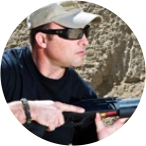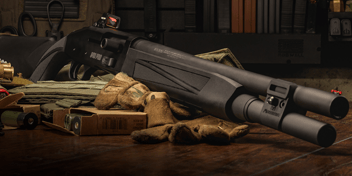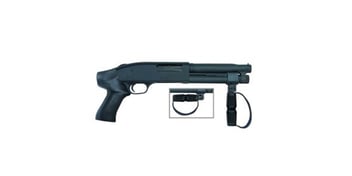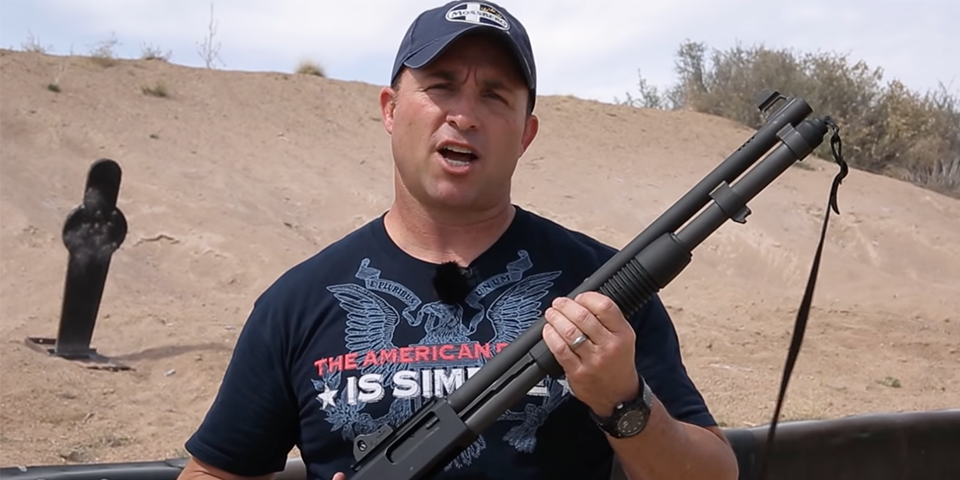
Good shotgun sling techniques provide for both fast deployment and a safe, secure carry of your firearm. Mastering these techniques will make you more efficient, regardless of whatever adventure you find yourself in.
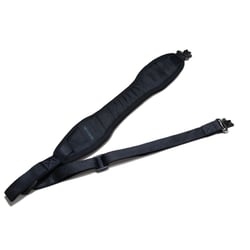 While Stafford is slinging our 590A1 shotgun, these techniques will work with most long guns.
While Stafford is slinging our 590A1 shotgun, these techniques will work with most long guns.
In this video, Jeremy Stafford discusses his favorite techniques for slinging long guns equipped with a standard strap.
He demonstrates various approaches, including:
- Support Side Muzzle Up
- Support Side Muzzle Down
- Climb and Carry alternative
Remember, always follow the safety rules when practicing shotgun sling techniques.
Video Transcript:
Hi, my name is Jeremy Stafford. I'm a police officer, a police firearms instructor and I'm a United States combat veteran. We're going to talk about slinging techniques today with the Mossberg 590A1 shotgun.
The first technique we're going to talk about is the primary side, muzzle up sling arms. From here, it's very simple. I'm going to bring the muzzle up, I'm going to control it with my support arm right here, right at the fore-end.
Keep that muzzle up and out of the way so that it doesn't dip and cover anything. From here I'm going to bring my primary hand through, control the sling like so, and then just guide it onto my shoulder.
Once I have it on the shoulder, I can move it around so that it doesn't interfere with any of the holstered firearms or anything else that I might have on my belt. The last thing I want is to be struggling with a sling when I would rather be drawing my pistol.
Now, you'll notice that I can transition control from my right to my left hand. If I need both hands, I'm going to go to what we call a climb and carry technique.
From here I'm going to control the sling nice and high, I'm going to reach nice and low on that shotgun and I'm going to bring it straight up. This is going to allow me to bring some slack into the sling and just duck my head in like so. Once my head is ducked in, now I have both hands.
Getting out of this technique is going to be the opposite of what we just did. I'm going to use two separate steps. I'm not going to try to do it in one step because I'm going to lose control of the muzzle.
From here, I'm going to control it nice and high. You'll notice I'm going to use the sling, follow it all the way down, bring up that slack, bring it back down to my primary shoulder, and control it just like so.
From here, I'm going to reach down and clear it, shimmy my hip out of the way so that I can control the shotgun and there you go. I have it right in front of me and I'm ready to go.
The next technique we're going to talk about is the supported side muzzle down sling arms.
This technique is very useful because what I can do is as I control it from here, guide it around, and de-escalate a situation if I'm a law enforcement officer. The shotgun is behind me, I can address whoever I need to address, and it's very non-threatening. This was very useful to me in Iraq when I was working around large crowds.
If I have to deploy the shotgun, it's relatively simple. I'm simply going to push it out. You'll notice that I've controlled the forearm and I'm pointing at the threat.
From here I'm reaching underneath, and I'm just going to roll it right out on the target, just like so. If I know that I have my shotgun and I have it slung support side muzzle down, but I'm going to need a higher level of control, from here I'm simply going to go to a climb and carry.
Support side muzzle down climb and carry. From here I'm going to lift it up, I'm going to make lots of slack because I have to get my big fat head through the sling.
From here, just like so, and now I have both hands free to do whatever needs to be done. Now, if I need to deploy the shotgun from here, it's much faster than deploying the shotgun from the primary side muzzle up climb and carry.
All I have to do is once again control that forearm, point towards the threat, grab underneath, and then roll out of it. You'll notice how I'm up and I'm on target and I'm ready to go.
These were just two very basic, very fundamental slinging techniques. The reason that I thought those were important is that you cover a wide spectrum of tactical uses this way and because this is just a standard strap sling that's well within everybody's means.
If you're going to deploy a shotgun, you need to have some sort of ability to hold on to that shotgun if you have to use your hands. A sling is the best way to do that.
About the Author
